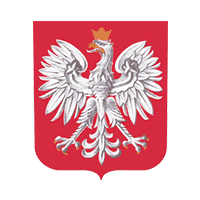Andrzej DRWIĘGA, Bogna GLIKLICH-KOSTRZEWA
The article discusses the assumptions of Circular Economy in relation to mine waters and their properties that predispose them to be used as a low temperature source of heat and cold. Examples of geothermal installations made in Poland and in the world have also been presented as well as work carried out in this area by ITG KOMAG. The results of the analysis allow to state that mine waters are a stable source of low-temperature heat. They are used in mining areas in all climatic zones, in order to meet the diverse needs of consumers in the field of heating, cooling and hot water preparation. The chemical composition of the water, the volume of water resources and the possibility of using the existing drainage infrastructure, as well as the distance of end users from the heat source – ideally 150 to 500 m, without the need to isolate pipelines – play a significant role in the design of the heat recovery system based on mine water. These factors affect technical solutions such as: system configuration, location of the heat exchanger and the type of heat pump. They also translate into the level of investment outlays. High costs of building a system are compensated by the low costs of its operation and ecological effect of the investment. At the investment planning stage, it is beneficial to conduct a risk analysis aimed at identifying factors that may have a significant impact on its implementation.
Heat recovery systems based on mine water can be used for both: active and closed mines, with heat exchange in a surface heat exchanger tank, individual heat pumps located at end users and the possibility of dropping used water or re-entering the underground. Supporting the heating system with cogeneration unit can be economically viable in the case of availability of waste fuel, such as methane. An additional effect would then be the reduction of harmful to the environment methane emission. Mine waters, thanks to the use of available resources, existing infrastructure and the technology of heat pumps, can become a valuable source of energy in a circular economy.
Grażyna PAJOR, Monika DUDA
The article presents an innovative way of mining waste management at the “Bolesław” Mine And Metallurgical Plant S.A., which became one of the possibility of supplying smelters with material for the production of Zn-Pb concentrate. The rational flotation waste management carried out by the enterprise, consisting of on the reworking of post-flotation waste produced earlier, minimizes their negative environmental impact and thus protects the surrounding environment. The actions taken also contribute to the protection of natural deposits of zinc and lead ores.
Alicja KOZERA
This paper presents the legal status of applying the opt-out clause in the working system in Poland according to the European Union law. There has been proposed a legal modification of the labor code concerning a voluntary work consent, which will cause a considerable decrease in breaking legal work system regulation of statutory working time in all fields of industry, also in mining. The proposals to change the Labor Act in May 2018 contained such regulations but because of numerous protests of workers trade unions they were not introduced.

